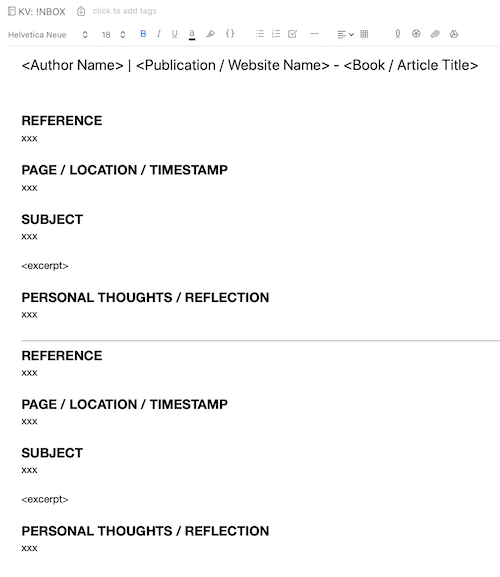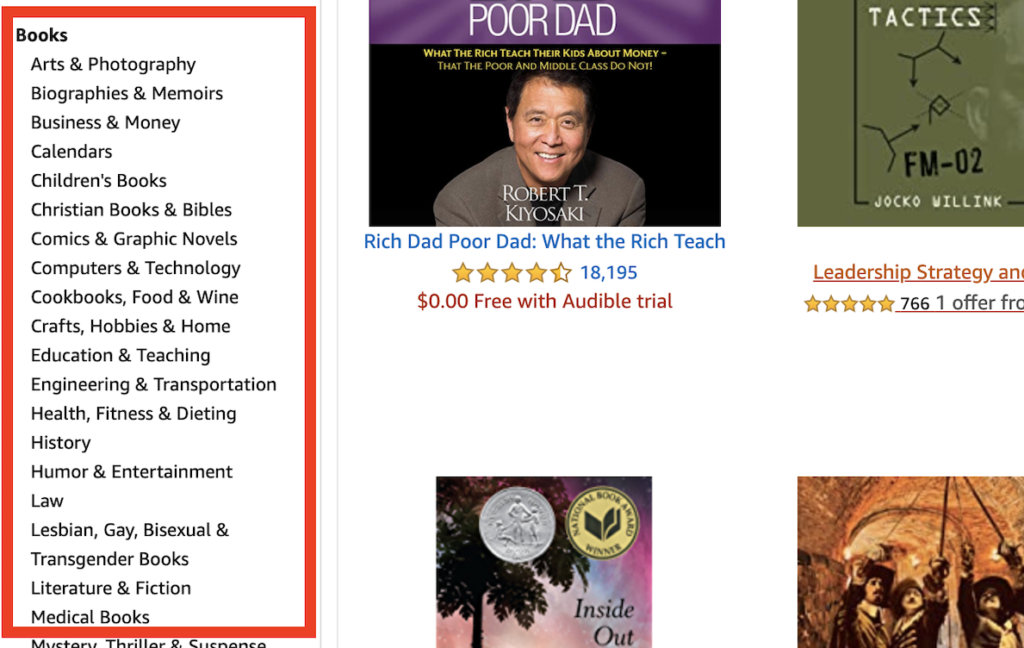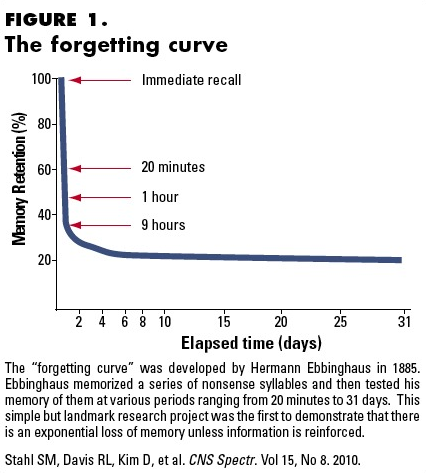You Need a System to Acquire Knowledge, Here's How You Can Build One

Table of Contents
Every day, we get bombarded by information.
Rows after rows of notifications on our phone greet us in the morning.
Throughout the day, we consume more information.
News apps keep us on our toes with what’s happening. Social media platforms dish out a variety of bite-sized content to stop our thumbs. And we have online courses, books, articles, and podcasts sitting somewhere on a physical shelf or a browser tab, yearning for our attention.
A system in place to turn the information we consume into knowledge is essential. Else, we’ll fall into the trap of mindless consumption. Or worse, paralysis caused by information overload might drive us into depression.
Be Very Picky
Like how you should be saying no to most requests, you must be picky about the information you consume.
According to Statista, more than 500 hours of video were uploaded to YouTube every minute. On WordPress.com, almost 75 million blog posts were published in April 2019 alone.
Almost all of these are noise. We should stay away from them.
Turn Off All App Notifications
Only allow banking and delivery apps to ping you. Adjust your settings to only get important alerts.
Unsubscribe from Newsletters
Don’t just delete or archive promotional emails. Unsubscribe. If they persist, mark them as spam.
Maintain a Content Queue
Ask yourself these questions when stumbling upon an interesting article or video:
- Is it useful for a project you’re working on?
- Will it change how you do things?
- Will the content still be relevant in a year?
Unless you are seeking entertainment, skip the content piece if you can’t answer yes to any of the questions.
Even if a piece of content is worth consuming, don’t do it right away. Add it to a queue like Pocket or Instapaper. I save mine to Notion using its web clipper.
When you get time to go through your queue, you’ll realize some of the items no longer appeal to you. Delete them.
What About the News?
Unless your job requires you to know what’s in the news, you don’t need it at all.
News doesn’t represent what’s happening around us, and there’s nothing you can do about what’s reported. They pacify our negativity bias to get our attention, leaving us fearful, frustrated, and sometimes, angry.
Even The Guardian, an award-winning news outlet in the United Kingdom, has a piece on why news is bad for you.
Take a look at news articles from 3 months ago, how many of them are still relevant? If a current event is significant enough, you’ll hear about it anyway through word of mouth.
Eliminating news allows you to focus on what’s in your control. You’ll get more time to create, to improve yourself, and to connect better with people around you.
Capturing Information Based on Its Source
The system to acquire knowledge starts with a process to capture pieces of information coming through your filters.
The process differs based on the sources of information. I designed this process for myself, so feel free to tweak it to fit your workflows.
On the Go
When I’m out and about, I capture ideas by recording a voice note using Apple's Voice Memos. It’s easy. I don’t have to stare at my screen while doing it. Google Keep is my go-to app to snap photos of inspirational objects.
Email Newsletters
I love receiving newsletters from people I look up to in industries I’m following. But I don’t want them to distract me from work.
I set up a filter on Gmail for every newsletter subscription. The filter marks these emails as read, forwards them to Mailbrew, and moves them to trash. I read them on Mailbrew when I have some downtime.
eBooks / Kindle Books
The Kindle format is my preferred version for a book. The Kindle iOS app has all the features readers like myself need to capture their learnings. It syncs reading progress across devices, and it stores all my highlights and notes in an online notebook.
For every book I read, the notebook will have a page displaying all the highlights I made and the notes I took while reading the book. I use Notion’s Web Clipper to clip all of them for further processing.
Physical Books
Digitizing your notes from reading physical books is tedious but doable. I use the Pro version of an app called Scanbot to do it. The Pro version comes with an OCR scanning feature.
Take a photo of a page using the app. The OCR scanning feature will enable the text for copying. From there, you can paste the digitized text to your favorite notebook.
Podcasts / Audiobooks
I use Overcast for podcasts and Audible for audiobooks.
With Overcast, I can share a link to a timestamp in a podcast episode to another app. Audible’s app made it easy to capture a snippet of an audiobook with the Clips feature.
I only listen to audiobooks and podcast episodes when I can give them my full attention. While listening, I take notes. I will miss the noteworthy points with passive listening.
If a transcript is available, I always use it to “read” a podcast episode instead of listening because I can go through it much faster.
Videos
Like podcasts, I don’t watch videos in a casual setting. I must take notes to capture my learnings.
When I transcribe a video into my notes, I include a link to or a remark of the timestamp. If the entire video is a gem, I will find a way to download it and save it to Google Drive.
I seldom acquire knowledge by watching videos. If you prefer learning from videos, get a transcription service to convert the audio into text. It will double or triple your consumption and note-taking speed.
Processing the Information You’ve Acquired
Clipping a link to your reading list or collecting information into your notebook alone doesn’t give you knowledge.
This part of the system has five steps to convert the information you’ve acquired into knowledge. Without these steps, you’ll lose almost all of what you read or learned.
Step 1: Creating an Inbox
In your note-taking software, create a notebook to act as a landing zone for new information.
I name the notebook “!INBOX”. The exclamation mark prefix will put the notebook at the top, following an ascending alphabetical order.
Dump all new information into the inbox. Schedule a weekly session to process everything in there. One week’s worth of new information takes me around 1 to 2 hours to process. I do this every Saturday.
1 to 2 hours may seem a lot, but it’s not once you take a look at the upcoming steps.
Step 2: Formatting
As I go through my inbox, there will be a mix of links, items to read, web clippings, Kindle highlights, random notes, and pictures.
First up, I have a notebook in acting as my “read later” list. All the links to books and articles I want to read during my free time go into the notebook.
Web clippings, Kindle highlights, and insights I’ve transcribed from videos and podcasts go through a formatting process.
At this point, I format my notes so they become a summary of the book, article, video, or podcast I’ve consumed. The template looks like this:

The title of each note follows this syntax:
[Author Name] | [Publication / Website Name] – [Book / Article Title]
In the notes, I tag every excerpt I gathered with these self-created “metadata”:
- Reference: To insert a link to the source.
- Page / Location / Timestamp: To indicate the position where the excerpt was found.
- Subject: For keywords related to the excerpt.
- Personal Thoughts / Reflection: To attach my opinion and additional thoughts about the excerpt.
Why the need for personal thoughts and reflection?
Step 3: Attaching Personal Thoughts and Reflection
According to the European Committee of Standardization’s European Guide to Good Practice in Knowledge Management document, knowledge is the combination of data and information, to which is added expert opinion, skills, and experience, to result in a valuable asset which can be used to aid decision making.
To turn any highlight, excerpt, or note into knowledge, you need to add your perspectives, opinions, or relate your past experiences to it. Without your inputs, they remain as information.
When I revisit these notes later, these additional remarks will remind me why an excerpt piqued my interest. They will reveal how my opinion and perception of a subject changed over time too.
Step 4: Organizing Your Archives
Storing your notes and keep them organized make it easier for you to find what you need later on.
You can nest your pages together on Notion while other digital notebooks give you the ability to have subfolders.
I categorize my formatted notes into three different stacks:
- Knowledge Vault: For notes containing knowledge and insights.
- Swipe File: For writing examples such as a powerful story or a witty metaphor.
- Tools Vault: For links to software, products, and apps.
In the Knowledge Vault and Tools Vault, I divided my notes further based on the primary categories of the book section on Amazon.

That’s it! You’re done with processing the information you acquired!
Step 5: Revisiting Your Knowledge
The last, but equally important part of the process to acquire knowledge, is to revisit it.
You will forget what you learned even if you wrote it down.
Hermann Ebbinghaus, a German psychologist who studied memory, came up with the forgetting curve between 1880 to 1885.

As you can see from the graph above, we forget more than 50% of what we learned within an hour.
Hermann believes active recall is one of the methods to slow down the rate of forgetting. It involves the use of flashcards to prompt answers for a set of questions designed to help you remember better.
An easier, but less effective method to revisit your notes is to do a passive review. It entails multiple rereads of your notes over the next few months.
I tag every new note in my “Knowledge Vault” with a reminder to revisit it.
The first reread will be a month after I saved the note. The second reread will be two months after that, and so on and so forth. It goes up to five rereads. I keep track of them by indicating the count at the beginning of my note titles.
You can update your thoughts and opinions attached to each excerpt when you do a reread. Repeating this step will help anchor the knowledge in your memory.
You Need Discipline for This System to Work
There you go – now you understand what makes up a system to acquire knowledge.
Set it up for yourself and follow the system as much as you can.
Between merely finishing a reading material versus successfully extracting knowledge out of it, only one of it is impactful for the growth of your intellect.
Have questions or suggestions for my system? Share them with me in the comment section below.
Join the Newsletter
Every two weeks, you will receive an email from me with interesting content pieces or products that I stumbled upon, as well as my latest essays.
No spam, ever. Unsubscribe at any time.